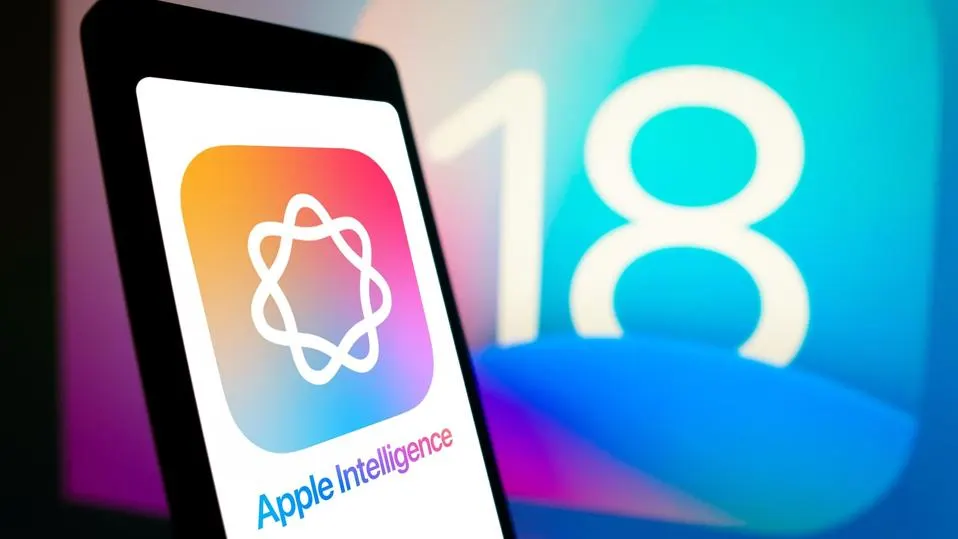AI Anxiety: How These 20 Jobs Will Be Transformed By Generative Artificial Intelligence
19 June 2023
The explosion of interest in generative artificial intelligence (AI) applications has left many of us worried about the future of work. While it has exciting implications for transforming just about every industry, there is uncertainty about who might become redundant and what skills we will need to remain useful in the future.

The truth is just about every job that requires creativity or working with information is likely to be affected in some way. It's essential to understand that generative AI is a tool, and those who learn to harness its potential are those who are likely to prosper rather than find themselves being replaced. So here are some of the jobs that are certain to change, along with the tasks that you should learn to delegate to AI.
Customer Services Agents
ChatGPT and large language models like GPT-4 can be used to build chatbots that answer customer inquiries, create transcripts of calls and summaries of interactions, giving an instant overview of issues that are important or are causing problems for customers. It can provide automated and personalized responses and offer support in many different languages. It can also be used as a training system to simulate customer inquiries.
Marketers
Marketing content, including blog posts, social media messaging, email campaigns, and product descriptions, can be automated. This content can be personalized to target different customer segments. It can also be used to automate the creation of marketing strategies and identify the most relevant targets and goals that marketers should aim for.
Doctors
Doctors and other health professionals can use generative AI to generate and summarize medical reports based on patient data. It can summarize patient histories and even suggest diagnoses or treatments based on symptoms and patient presentations. Image-based generative AI can create simulated medical imagery such as X-rays, and CT scans to assist with the training of medical image recognition systems.
Journalists
Journalists and writers can use generative AI to assist with writing reports by getting it to suggest outlines as well as determine the important facts that need to be covered in their reporting. They can also use it for research by having it create summaries of information or the latest developments in a field that they are covering.
Architects
Architects can feed in relevant information such as site dimensions, local building regulations, and availability of materials and get it to generate design ideas based on these criteria. Generative image-based AI can create initial design proposals or instructions for creating 3D models or 3D-printed prototypes to assist in visualizing and communicating their ideas to clients.
Computer Programmers
Generative language-based AI is proficient in creating computer code as well as human languages and can also suggest structures that should be used when creating programs, tools, and applications. It can debug code, quickly find errors and point out more efficient methods of achieving the desired results. It can also assist with creating technical documentation and explaining how code works, and as a tutor to help humans improve their own coding skills.
Web and Graphic Designers
Web designers can use language-based generative AI to automate the creation of code, allowing them to spend more time on creative tasks. It can be used to quickly generate prototypes of websites or individual graphic design elements such as logos, which the designer can then apply their human design skills to in order to create a finished product. It can be used to quickly gather together ideas that are similar to the project the designer is working on in order to provide inspiration or insights into trends.
Translators
Tools like ChatGPT can quickly translate almost any human language. They understand different alphabets and scripts and can create personalized translations that target specific information within a source text to different audiences, depending on the amount and depth of the information they need.
Teachers
Teachers can use generative AI to automate the creation of lesson plans, suggesting the best ways to teach subjects and highlighting the important information that needs to be communicated to students. It can automate the personalization of teaching materials for students of different levels of maturity or ability. It can create and grade tests, providing in-depth insights into the level of understanding of individual learners. It can also provide teachers with information and assistance with their own professional development, ensuring they are up-to-date with the latest teaching methodologies and resources.
Banking and Financial Services Professionals
Generative AI can be used to create financial reports, including assessing credit risk, fraud detection, and many of the routine reports that financial services professionals need to file regularly. It can be used to automatically process documents such as loan applications, KYC forms, or new account applications. It can also be used in training and professional development applications to ensure employees are aware of the latest regulations and compliance requirements affecting their roles.
Product Designers
Product designers can take advantage of generative design applications that automate the creation of design documents, blueprints, and prototypes by analyzing information such as material specifications and customer requirements. Then, it can automatically create instructions for 3D-printed prototypes or machining tools to go from natural-language input to prototype or even finished products.
Lawyers
Lawyers can use generative AI to research relevant case law and rulings and to automatically create summaries of information relevant to cases they are working on. By doing this, lawyers can vastly reduce the amount of time they spend going through documents and spend more face-to-face time with their clients, getting a more in-depth understanding of their individual requirements. It can also automatically generate contracts and other legal documents to personalized specifications.
Data Analysts
Large language models can automatically analyze, review and summarize large and complicated datasets, providing overviews and insights. It can also automate the generation of reports communicating these insights, personalizing them to the individuals who need the information in a way that's specifically relevant to them, in a language they will understand.
Project Managers
Here, generative AI can be used to automate project planning, timelines, resource allocation, and risk management. It can assist with creating individual workflows for team members and with administrative tasks such as scheduling meetings and creating minutes, capturing key decisions and action points as they occur. It can be used to create reports that track performance during project delivery, automatically identifying obstacles and suggesting methods of optimizing processes and workflows.
Illustrators
Illustrators can use AI to generate inspiration in the form of sketches, as well as suggest elements such as color palettes and styles. It can help with keeping stylistic elements consistent across a set of images and provide image enhancements such as accurate shadowing and lighting. It can also help illustrators improve their skills by suggesting areas for improvement.
Interior Designers
Generative AI can help interior designers to visualize the way that they will transform spaces by analyzing inputs such as room dimensions, client preferences, and functional requirements. This can help designers to come up with a range of possibilities within a space. It can also provide information on new trends to allow them to provide up-to-date styles for their clients. It can help with material and product selection and provide 3D visualizations to help communicate their ideas to clients.
Technical Support
Generative AI can be used to analyze incoming support tickets and automatically assign them to categories or to agents best placed to handle them. In many instances, it may be able to provide automated responses. It can get to know the problems and pain points most frequently experienced and create automated FAQ documents with relevant solutions. It can also be used to train human agents by role-playing as customers or users with unique problems and analyze their performance, offering input on how they can improve their support skills.
HR Officers
HR can be used to automate the creation of documents, including policy documents, employee handbooks, and onboarding guides. It can be used to communicate policy in any number of different languages, using content personalized to specific audiences, such as different job roles or levels of seniority. It can create surveys and questionnaires to help monitor employee satisfaction and analyze the results to create automated reports and feedback summaries. It can also be used during recruitment to determine which applicants have relevant skills by analyzing their resumes, personal statement, and application letters.
Researchers
Generative AI can assist with gathering the latest information on whatever topics are being researched and creating summaries of the most important points or whatever information is relevant to the topic at hand. It can analyze datasets and assist with the design of scientific experiments. It can create research reports and ensure that research is being carried out in line with legal and ethical standards.
Video Game Designers
Generative AI can be used to automate the generation of procedural content, creating environments and challenges that will engage the player. It can enable designers to fill their worlds with dynamic narratives and storytelling that react on-the-fly to players’ choices and actions. It can also enable them to populate their worlds with more realistic characters that react in a natural, believable way. And it can analyze player feedback, such as social media discussions or online reviews, in order to provide feedback on how well a game is received and highlight areas for improvement or bug-fixing.
Related Articles
Will AI Solve The World’s Inequality Problem – Or Make It Worse?
We are standing on the cusp of a new technological revolution. AI is increasingly permeating every aspect of our lives, with intelligent machines transforming the way we live and work.[...]
How You Become Irreplaceable In The Age Of AI
In a world where artificial intelligence is rapidly advancing, many of us are left wondering: Will AI take our jobs?[...]
Why Apple Intelligence Sets A New Gold Standard For AI Privacy
In the rapidly evolving world of artificial intelligence, privacy concerns have become a hot-button issue.[...]
Can Your Device Run Apple Intelligence? What You Need To Know
Apple's announcement of Apple Intelligence has sent waves of excitement through the tech world.[...]
10 Amazing Things You Can Do With Apple Intelligence On Your IPhone
Apple Intelligence is poised to revolutionize the iPhone experience, offering a suite of AI-powered tools that promise to make your digital life easier, more productive, and more creative.[...]
Agentic AI: The Next Big Breakthrough That’s Transforming Business And Technology
The world of artificial intelligence is evolving at a breakneck pace, and just when you thought you'd wrapped your head around generative AI, along comes another game-changing concept: agentic AI.[...]
Sign up to Stay in Touch!
Bernard Marr is a world-renowned futurist, influencer and thought leader in the fields of business and technology, with a passion for using technology for the good of humanity.
He is a best-selling author of over 20 books, writes a regular column for Forbes and advises and coaches many of the world’s best-known organisations.
He has a combined following of 4 million people across his social media channels and newsletters and was ranked by LinkedIn as one of the top 5 business influencers in the world.
Bernard’s latest book is ‘Generative AI in Practice’.










Social Media